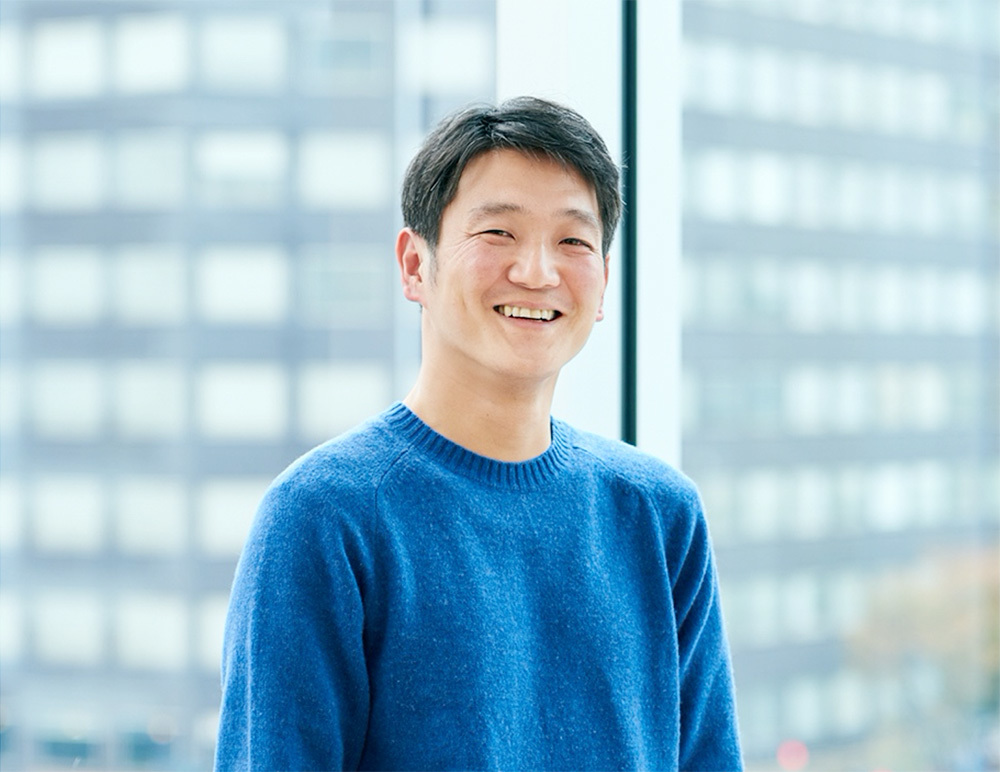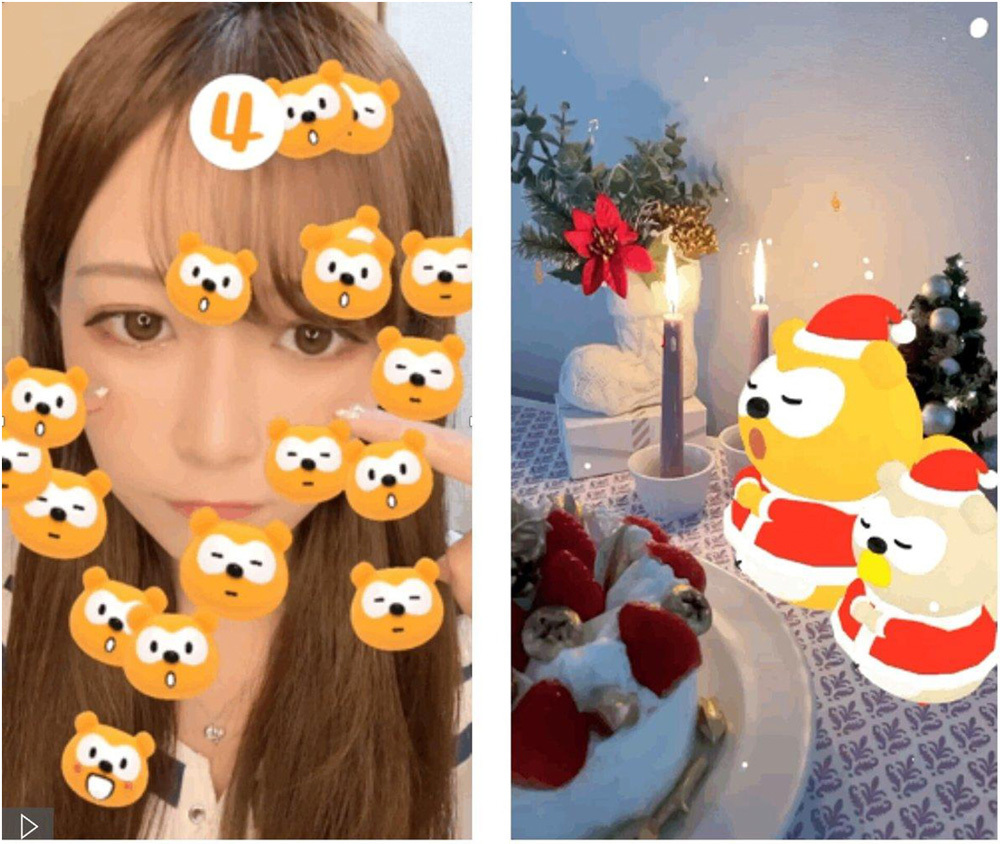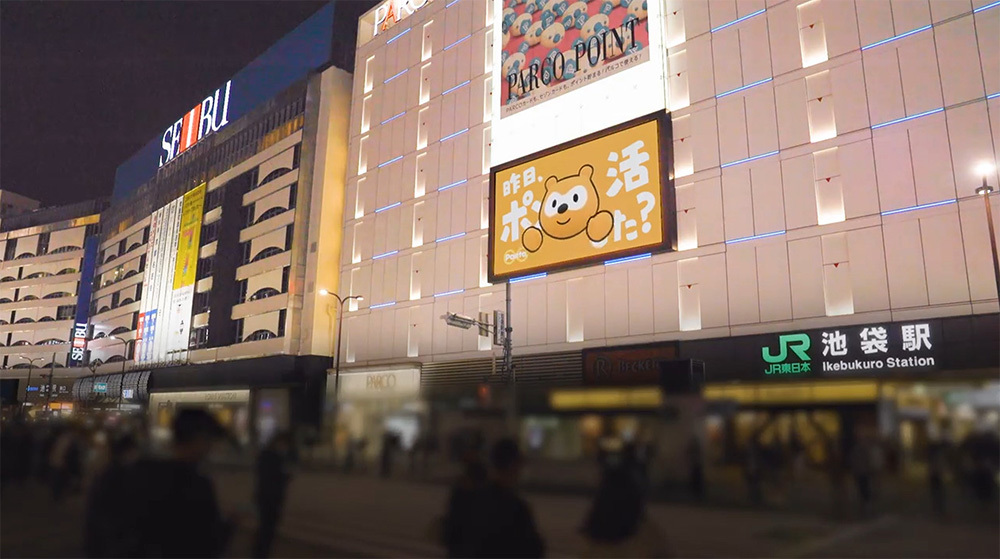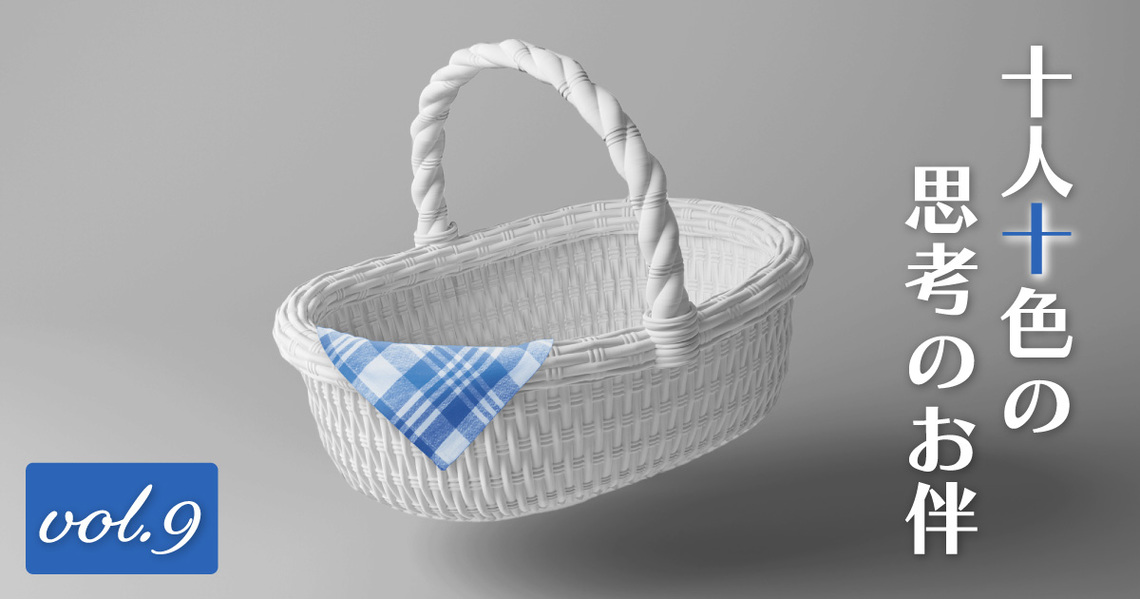This series began as an editor's whim to offer wonderful content under the theme of "10 people, 10 colors," coinciding with Web Dentsu Inc.'s 10th anniversary in 2023. While the "10" connection is central, if we're going big, it becomes a series themed around "diversity."
When we want to immerse ourselves in thought or try to squeeze out ideas, we need our own indispensable "companions" – items we simply can't do without. For the great detective Sherlock Holmes, these would be his beloved "pipe" and "violin."
This series invites various individuals to share their own "personal companions for thought." We hope you'll enjoy discovering their unexpected sides while pondering "thoughts about thinking."
(Web Dentsu Inc. Editorial Department)
Guest for the 9th installment: Art Director Kentaro Itonori
──Mr. Itonori, you're known for creating numerous popular characters like Ponta (ⓒ Loyalty Marketing) and Nanana (ⓒ TV Tokyo). Today, we'll hear from you as the "creator of these characters." Thank you for joining us.
Itonori: Thank you for having me.
──In your responses to the questionnaire we sent prior to the interview, you mentioned, "Since you maintain a long-term relationship with a character, it's enjoyable to watch its growth and feel the changes in its fans and clients." That's precisely the kind of "parent's perspective" comment only the creator could offer, right?
Itonori: I'm not sure if it's exactly a "parent's perspective," but for example, Ponta will celebrate its 15th anniversary in 2025. Nanana is turning 11. Honestly, I just think, "Wow, they've been around for so long." With Ponta, I'm often surprised, like, "Huh? Ponta can do that now?" We started with the Ponta family, but before I knew it, new characters like "Buffaloes☆Ponta" and "Grandpa Ponta" were born. It's joyful to see characters I created evolving in unexpected ways! But what really moves me are the fan reactions like, "I'm so happy I can cheer for my favorite team together with (Ponta)," or "I never thought this collaboration would happen... Way to go, Ponta!"
──Wow, that would make me cry. That parental feeling of "Just the other day he was still wobbling around..." I totally get it.
Itonori: It's deeply moving in so many ways. That feeling of "Wow, he's grown so much already"—it's impossible to express in just one word.

Itonori Kentaro: Art Director (Dentsu Inc. CXCC). Widely active in character-driven communication. Handled character design for the Ponta points service, TV Tokyo's "Nanana," and Hormel Foods' "SKIPPY'S." Released Character CX Solutions that combine characters with technology to create new customer experiences, implementing and operating unprecedented character experiences. His latest article on Web Dentsu Tsūhō is here.
──Hearing that, I really envy the profession of art director, who can bring characters into the world.
Itonori: It's not just about creating characters; there's definitely a joy in watching them grow over time. You hope they'll keep growing bigger and stronger.
──You think about things like that too?
Itonori: We share the joy of Ponta's growth with the clients who launched him into the world, and we discuss together how we hope he'll develop going forward. Sometimes, someone who originally encountered Ponta as a consumer becomes the person responsible for him at the client company. Feeling the passage of time like that really touches me.
──This conversation is deep, huh.

The "multiplication" with people is fascinating. (Itonori Kentaro)
──Things like "If this were a person, how old would they be?" or "We've been connected to such-and-such for so many years now" are probably a big part of the character's charm. It's not just an "anniversary"; you feel the drama of growth there. And that story of growth isn't just about the character itself, but about all the lives connected to that character.
Itomori: Characters aren't born and grow solely through my own efforts. They involve clients, fans, teammates I collaborate with. For instance, when meeting with digital domain professionals—younger generations often called digital natives—they've grown up taking VR worlds and social media for granted. Honestly, I realize I'll never grasp their core essence. It's not about revolutionary ideas or anything like that. For them, that's the real world, their utterly ordinary everyday reality. By touching that world I don't inhabit, I believe both myself and my characters grow.
──I see. So curiosity about what people living in a different world see and feel stimulates your thinking, Itonori-san.
Itonori: More than stimulation, it's simply that technological progress leads to progress in expression. So, for example, with AI, my honest feeling is "Hurry up and evolve more!" Because I can't evolve the technology itself. When they say, "Look how far we've come," I get excited about mixing it with characters and thinking about what to do next.
—That sounds like you. Very Itonori-like. I know you're thinking, "Hey, what do you know about me?", but that's my impression.
Itonori: When someone tells me, "This is what 'real' is like in a world I've never known, never experienced, let alone lived in," I'm just genuinely impressed. "So this is what 'real' is like in this era," I think.
──So it's like, what would happen to that world if you combined that "reality" with the characters Mr. Itonori created? Wow, that sounds fun.

Chabot, the robot created by combining Ponta and AI
Itonori: I think the key is the "multiplication." Whether it's "Character × Digital," "Character × Education," "Character × Dual Funnel," "Character × HR"... whatever it is, finding something to multiply it with expands the world right before your eyes.
──It's not just abstract theory or a metaphor; it's like that world materializes in your mind, and there sits a character, all alone. Yeah, that's exciting.
Itonori: If I hadn't discovered this "multiplication" approach, I doubt I could have kept this work interesting for so long. If all I ever got were requests like, "Hey, can you make me a 'cute' character that's 'kind of like this'?"—well, it's a blessing, but it would get monotonous.
──Honestly, that would be tough.
Itonori: It's tough, yes, but it also means the world doesn't expand. But when someone says, "Show us the appeal of cutting-edge digital technology in a clear and compelling way," it somehow sparks my motivation. The department I belong to, Dentsu Inc. CXCC, is precisely the section responsible for that kind of thing, and the scope we handle is incredibly broad. If you flinch at that, you won't move forward. I approach my work with the mindset: even if it's "broad and shallow," as an art director, what can I do?
──I see. When you're given a "something × art" combination, the possibilities truly expand infinitely.

Example: Ponta × AR Filter

Ponta avatarized and live-streamed on Tokyo OOH
What is Kentaro Itonori's "Companion for Thought"?
──Now, moving to the main topic, could you tell us about your specific "companion for thought"?
Itonori: I accidentally let it slip earlier, but I think it's encountering things and thinking, "I don't get it."
──Not understanding?
Itonori: Yes. It's encountering things that are so far outside my own scope that I genuinely can't understand them. When I encounter such things, lately, it actually sparks a positive feeling—or rather, a sense of excitement—making me wonder, "Well then, what can I possibly do in that world?"
──Wow, that's way too positive! Usually, when you think "I don't get it," you just back off, right?
Itomori: Yeah, I know. I've been a bit strange lately.
──Wahaha.
Itonori: Speaking of not knowing, there's this "AI" area I stepped into despite not understanding it. When I created an AI character set in the Edo period, since it only knew about Edo, I asked it about modern things and it replied, "I don't know about that." I'd assumed AI would answer everything properly, so laughter erupted right there. It was the moment when not knowing created new value.
──Not knowing, huh. I get it, I get it. That's what makes it human, right? AI is amazing. Has digital technology really advanced to that level already?
Itonori: Exactly. While thinking "I don't know," I also thought, "But what if we use that character as a strength and figure it out? Couldn't something new be born from that?"
──I see. So that's how you ended up pinning it down to character business, in a way, and connecting it to your work.
Itonori: Exactly. It's like that feeling of "Ah, I don't get this" actually saved me. So, right now, this work is truly enjoyable.
──I never would have thought that feeling "I don't get it" could be a positive emotion, a source for seeing characters in a new light. That's a great story. Looking back on my own life so far, it makes me want to keep growing.
Itomori: Hearing you say that makes me happy. Personally, I'm not really "growing" so much as just drifting along (laughs).












